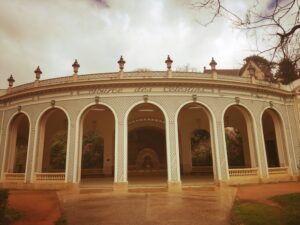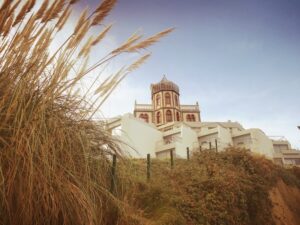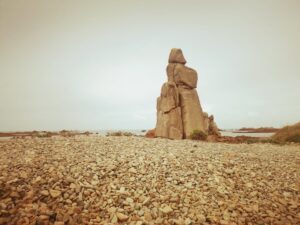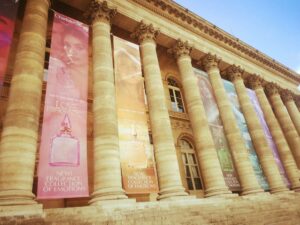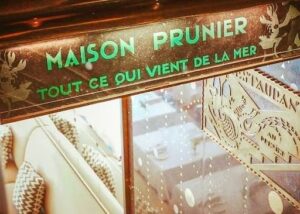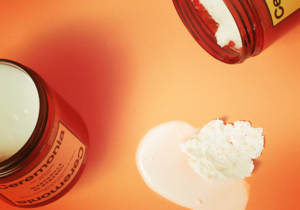A discovery of Dijon, capital of the Burgundy Franche-Comté region
9 min read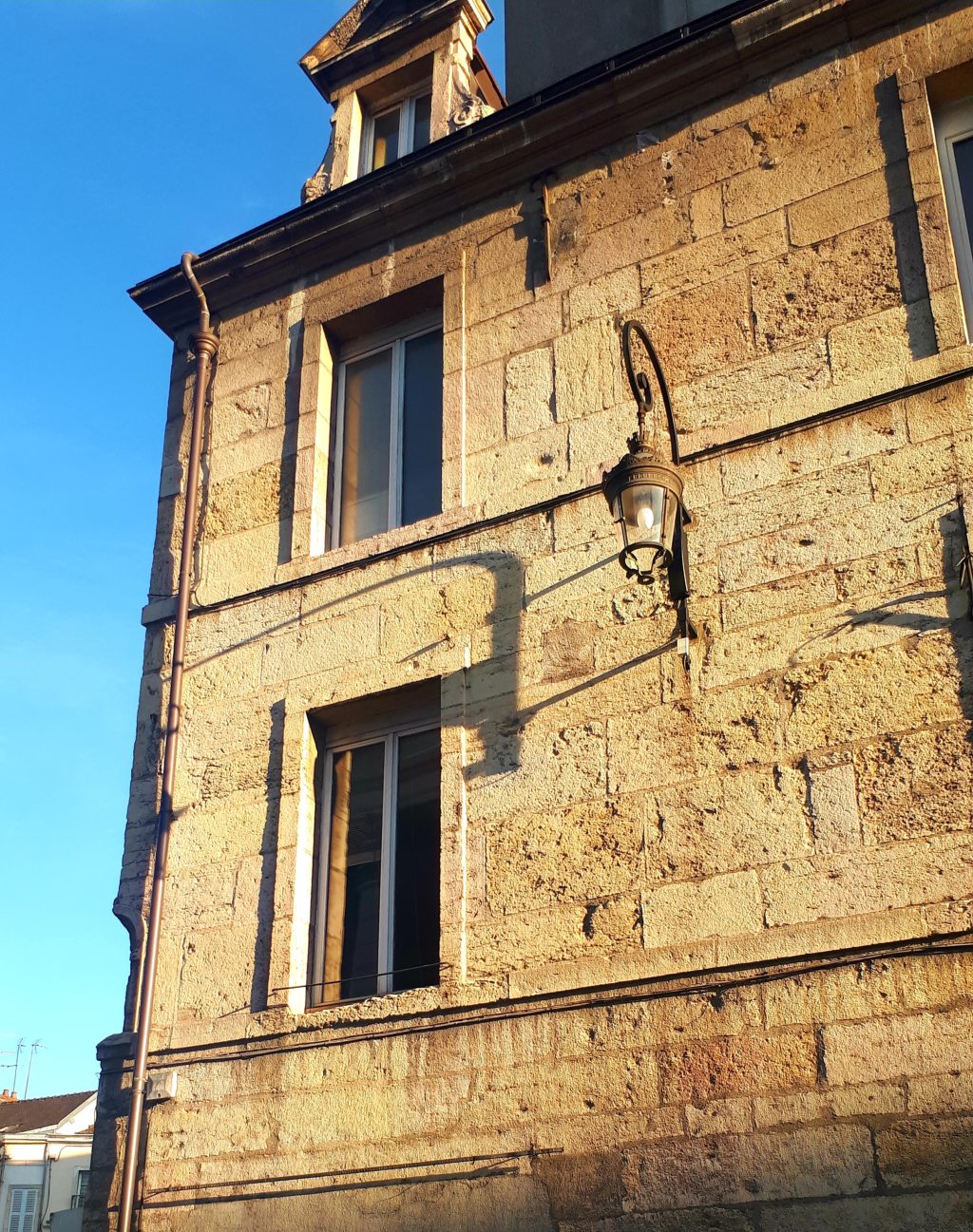
Welcome in Dijon! The historical capital of the Burgundy Duchy, in the Côte d’Or french department, contains a hundred of bell towers, under the Ancient Regime, heir to a rich historical and architectural heritage, Dijon is a “must-see” destination whose attraction is reinforced by the gastronomic reputation of the region. The historic center is the second component of the Climates of the vineyards of Bourgogne, registered since July 4th, 2015 in the UNESCO World Heritage List. A city of congresses, the Bourgogne Franche-Comté capital is also a green city with many parks like the Darcy Square, with a fountain in honor of this engineer who installed the city’s water network. You could also visit the main part of the city center, while following pedestrian streets to the other huge Colombière Park. Culture is also very present with the Musée des Beaux Arts, fully renovated and open since May 17th, 2019 with 130,000 artworks (from all the artistic periods) spread through 6,500sqm!
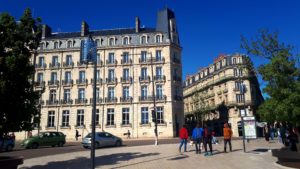

The Dijon train station built in 1850 is located in new districts, comprising made many Haussmann‘s styled buildings, like in Paris. All are stuck behind the old Wall dating from 1137 and disappeared on 19th Century, at the location of the actual arch. 700 hectares of parks and gardens mark out the city, allowing numerous pleasant walks especially due to a significant amount of pedestrian streets (photo credits: Alex Plato).
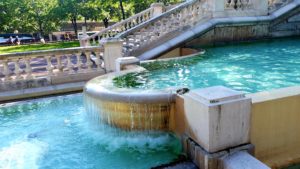
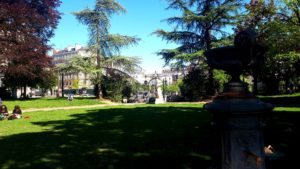

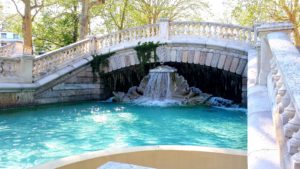
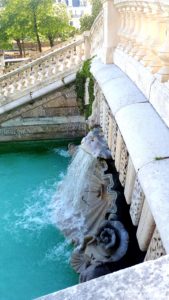

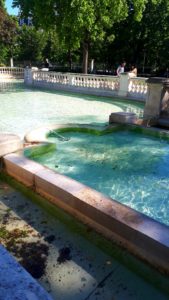 The first attraction would be the Darcy Garden located near the train station, lying on a former water tank, created by the engineer Darcy who had set up the first potable water supply network of France, and directly into the floors, back to 1847.
The first attraction would be the Darcy Garden located near the train station, lying on a former water tank, created by the engineer Darcy who had set up the first potable water supply network of France, and directly into the floors, back to 1847.Moreover, this water tower is visitable during the Journées du Patrimoine (Patrimony Days), powered by a source, located 14km away from Dijon.
This Park reserves you other surprises, like this water tower adorned with the Darcy bust, enthroned on the front, plus several sculptures therefore a replica by Martinet of the polar bear initially the artwork of François Pompon, whose original may be found at the famous Orsay Museum.
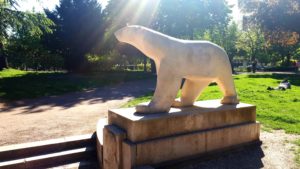
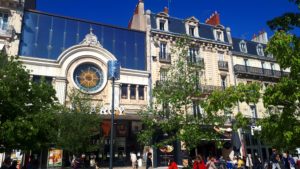
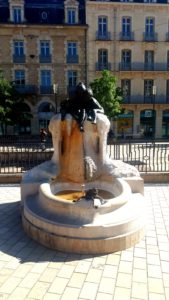
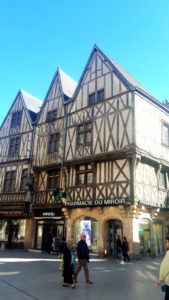
 The streets are broad and some old buildings coated of slate, were a sign of wealth. Indeed, Burgundy was rich by its surface, extending to the Flanders, bringing the main part of the incomes back to Dijon.
The streets are broad and some old buildings coated of slate, were a sign of wealth. Indeed, Burgundy was rich by its surface, extending to the Flanders, bringing the main part of the incomes back to Dijon.For the historical part, this splendor period spread until the integration into the Kingdom of France in 1477. Several dynasties have followed each other, the capetian one until the 14th century, then the Valois dynasty took over from 1363. Then again without any male heir, the prerogative made the territory paid back to France.
This Guillaume Gate was eriged in tribute to William of Volpiano, religious, who reformed this Abbey in 1000, on which the Cathedral was built thereafter. In the old Center, we may find these very old houses and a typical timbered tell pan house, which it’s also known to “3 faces” because of the 3 gears dominating the roof, like in Flanders precisely.
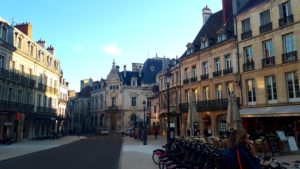
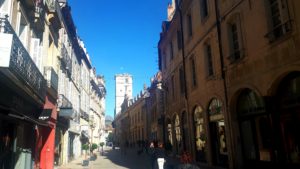
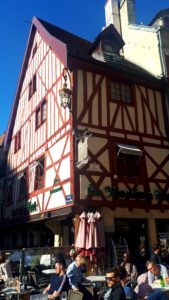
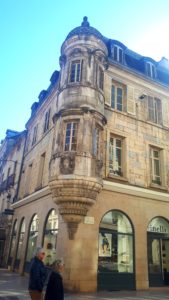
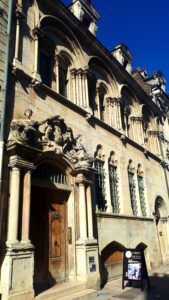 This Arch is adjacent to another house, from the Renaissance period which has a specific turret, representative of the bartizan time. This overhanging turret is an example of mixed periods, for this building dating back from the late medieval walls and early-modern fortifications, from the early 14th century up to the 18th century.
This Arch is adjacent to another house, from the Renaissance period which has a specific turret, representative of the bartizan time. This overhanging turret is an example of mixed periods, for this building dating back from the late medieval walls and early-modern fortifications, from the early 14th century up to the 18th century.The walk may continue on Place Rude or also named Bareuzai (meaning pink stockings) due to the former winegrowers, who crushed grapes while naked.
Namely also by the time the timbered were painted with beef blood because of the supposed special benefits for wood conservation. For sure, those houses are now covered by classical red painting but maybe you would find in the area, those relics! Between two half-timbered houses, pieces of Art may be seen in the streets, like this Visage de la Liberté (Face of Freedom) realized by the french sculptor Gloria Friedmann.
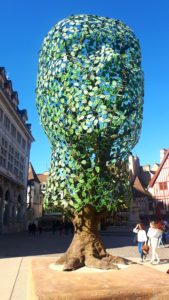
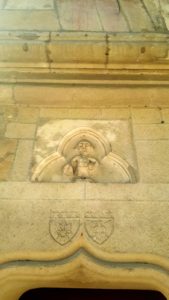 This way opens
This way opens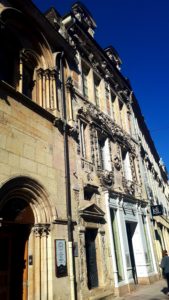 on the former main Street, the Rue Des Forges, including the old gothic House of the nanny of Charles Le Téméraire, who was called Simone Morel and Sauvegrain. This Hotel Aubriot, displays small sculptures humorous on its facade, called marmouzets (see the photos nearby and below). Nearby a Renaissance House, whose sculptures where designed by the architect Hughes Sambin, recognizable for its frescoes relief, featuring muffles Lion and fruits garlands. In addition, we found his signature symbolized by Burgundy cabbage around the three arrows.
on the former main Street, the Rue Des Forges, including the old gothic House of the nanny of Charles Le Téméraire, who was called Simone Morel and Sauvegrain. This Hotel Aubriot, displays small sculptures humorous on its facade, called marmouzets (see the photos nearby and below). Nearby a Renaissance House, whose sculptures where designed by the architect Hughes Sambin, recognizable for its frescoes relief, featuring muffles Lion and fruits garlands. In addition, we found his signature symbolized by Burgundy cabbage around the three arrows.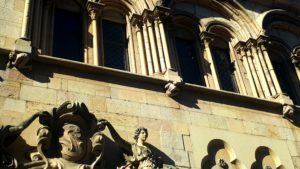



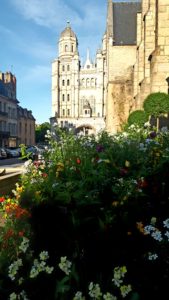 Some of ancient monuments were transformed, like the former the Saint-Etienne church, that became the Chamber of Commerce and Industry and since 2009, turned to La Nef, a cultural center including a café, a library and exhibition spaces.
Some of ancient monuments were transformed, like the former the Saint-Etienne church, that became the Chamber of Commerce and Industry and since 2009, turned to La Nef, a cultural center including a café, a library and exhibition spaces.A real agora, full of social networks, surrounding the former cloister, which has become a garden, and the giant, gothic and Renaissance mixed, Saint-Michel Church in the background.

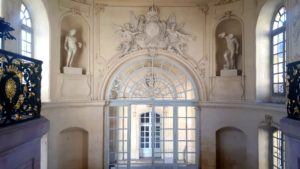
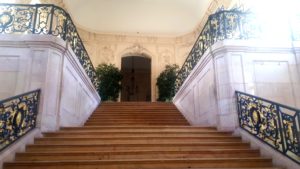
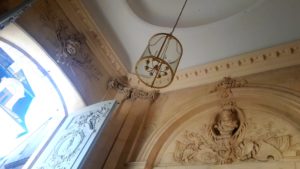

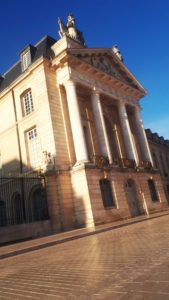
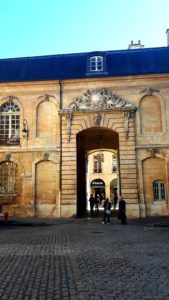 Then, since there were no more Dukes anymore after 1477, many governors were designated, under the King Louis XI’s initiative. Later, Louis XIV commanded the construction of the Palace Of Burgundy States, allowing governors to gather more spacious than the former Couvent des Cordeliers (Cordeliers Convent), today partially destroyed. You can visit the majestic room of governors, with a staircase directed by the architect of the King, Gabriel, for access.
Then, since there were no more Dukes anymore after 1477, many governors were designated, under the King Louis XI’s initiative. Later, Louis XIV commanded the construction of the Palace Of Burgundy States, allowing governors to gather more spacious than the former Couvent des Cordeliers (Cordeliers Convent), today partially destroyed. You can visit the majestic room of governors, with a staircase directed by the architect of the King, Gabriel, for access.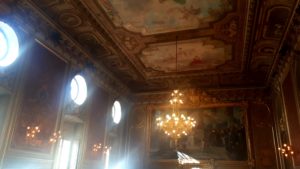
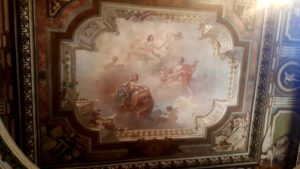
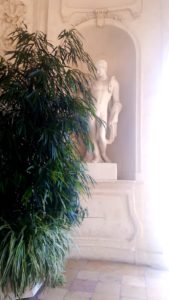
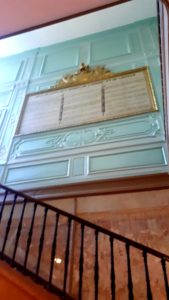

Nowadays, this typical Burgundy palace hosts the City Hall, the Tourism Office, the Municipal Archives and last but not least, the Musée des Beaux-Arts (Museum of fine Arts)! In full Metamorphose, after many years of renovation, lately open in May 17th.
This monument was firstly opened in 1786 and even before the Louvre since it was the first Museum of this kind, to be opened in France! However the museum contains many older historic spaces, like the hotel hall of Philippe Le Bon built around 1450, where are presented since 1827 the tombs of the dukes of Burgundy. Plus, the Bellegarde Gallery, built in 1614 by the Duke of Bellegarde, Governor of Burgundy.
Also, the Tour de Bar (Tower of Bar), built by Philippe Le Hardi, around 1365, including 3 rooms: on the ground floor, chapter room of the Sainte-Chapelle; on the 1st floor, residential room with large windows and carved fireplace and on the 2nd floor, residential room where was held prisoner King René d’Anjou, Duke of Bar, from 1431 to 1436,

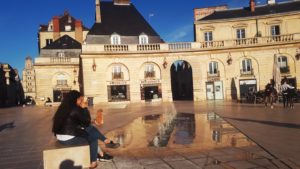
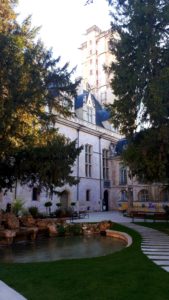
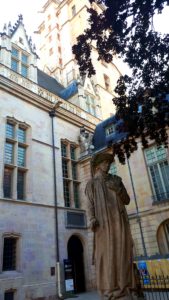
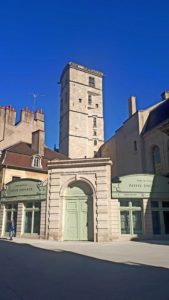 Another tower sits inside the Palace of the Burgundy Dukes, the Tour Philippe Le Bon, Duke of Valois, built in the 15th century, built between 1450 and 1460, the tower of the Terrace, which was a tour of housing for Dukes. It has a height of 46 meters, could be visitable thanks to the 316 steps to climb until you may finally enjoy the panoramic views of the city. The Tourism Office organizes, on appointment, aperitifs on the top-floor, during summertime.
Another tower sits inside the Palace of the Burgundy Dukes, the Tour Philippe Le Bon, Duke of Valois, built in the 15th century, built between 1450 and 1460, the tower of the Terrace, which was a tour of housing for Dukes. It has a height of 46 meters, could be visitable thanks to the 316 steps to climb until you may finally enjoy the panoramic views of the city. The Tourism Office organizes, on appointment, aperitifs on the top-floor, during summertime.And the Salle des Tombeaux (Graves Room) that the bypass, which was room guards with his Gothic style strongly recognizable. In the other hand, around this, the Royal Place which had the statue of Louis XIV horse was destroyed and fused at the French Revolution in order to make cannons. Today it is a question of instead of the revolution, littered fountains dynamic. This place faces the Palais Des Ducs et Des États de Bourgogne (Dukes’ and Burgundy States Palace) and, including the facade and the court renovated by the famous architect Mansart and covers the old Gothic part.
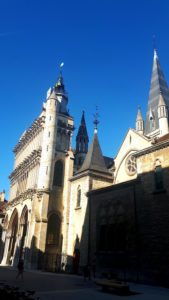
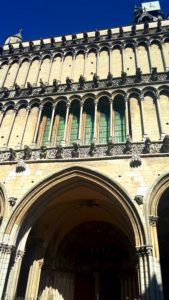
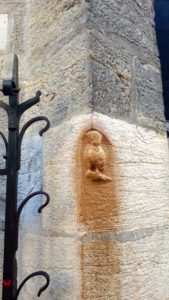 The Notre-Dame Church, built with the capetian funds between 1230 and 1250, has a pure Gothic style and is adorned with many gargoyles replica, added in 1880. Inside, you would admire the Black Virgin statue.
The Notre-Dame Church, built with the capetian funds between 1230 and 1250, has a pure Gothic style and is adorned with many gargoyles replica, added in 1880. Inside, you would admire the Black Virgin statue.This Church holds a monumental lantern tower of 74 meters height! Plus, a jaquemart, as well as a chime, giving the visitors the time.
This technology was a battle capture, brought back by Philippe the Hardy, from his Courtrai battle in Belgium.
The Church also has a small owl on one of the extremities of this holy edifice, on which the visitor should there affix his left hand, then make a wish, after admired the salamander on the left. But be careful not to watch the salamander again, after your wish!
Beyond the patrimony side, the gastronomy aspect… Those Burgundy specialities are represented by many longtime actors. Those are highlighted by the territorial JustDijon brand, reflecting the bubbling character of a metropolis offering multiple economic opportunities, resolutely turned towards innovation. From the creation of an urban vineyard to the elaboration of an ambitious intelligent territory project, unique in the world, this brand of the Dijon Metropolis is spawning the seeds of major projects on its territory. It works hand in hand with the other territory brand, Destination Dijon, an entity of the Office Tourism, both have the desire to promote this rich region full of gustatory surprises.
–
Tourism Office of Dijon – 11 Rue des Forges, 21000 Dijon – Open every day from 9h30 to 18h30 – T: 00 33 (0)892 70 05 58
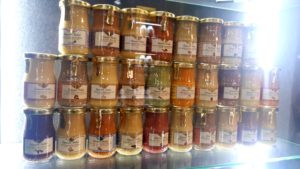
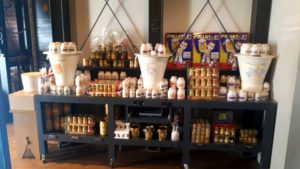
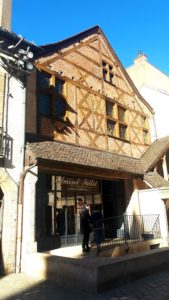
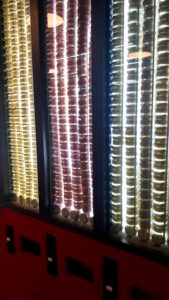
 Then make a stop to the Fallot mustard store, open 5 years ago, it’s an institution for Dijon mustard (moutarde) and this since 1840, although the production site is in Beaune. It remains the only one still located in its original buildings, just a few steps away, from the Hospices de Beaune.
Then make a stop to the Fallot mustard store, open 5 years ago, it’s an institution for Dijon mustard (moutarde) and this since 1840, although the production site is in Beaune. It remains the only one still located in its original buildings, just a few steps away, from the Hospices de Beaune.Take time to discover their 31 different aroma references, including one only made within the store with Meursault wine. In order to help you for the choice of your victuals, don’t hesitate to install yourself at the mustard bar.
This store is a haven of modernity inside an ocean of tradition, since you may find also in the store a mustard vending machine and a hologram playing, from 8pm until midnight, visible through the shop windows.
The origins of the Fallot House date back to 1840. This date that Léon Bouley founded on this site a factory of mustard and oil mill, distinguished in 1903 by a diploma of the City of Paris during the international exhibition.
Nowadays, the Fallot mustard is selected by some of the more famous French chefs: Paul Bocuse, Bernard Loiseau, Pierre and Michel Troisgros, Jacques Lameloise…
Their manufacture continues to produce mustard according to private recipes, since several generations, and grind the seeds through millstones, thus preserving all its taste qualities (photo below).
In addition to the classic Burgundy mustard products (Dijon mustard, mustard seeds), their production range has extended its creations to many other flavors. This always guided by the constant concern for the quality of products and the balance of often regional flavors.
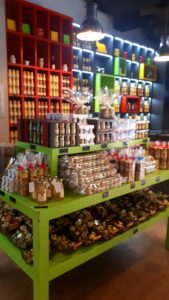
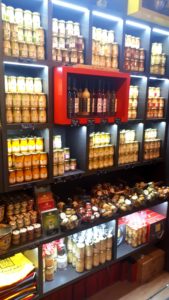
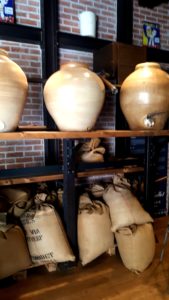
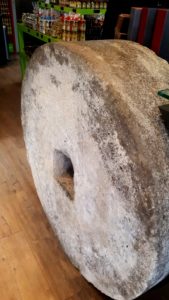
The history of mustard goes back to the highest antiquity: the Chinese, Greeks and Romans were already transforming the mustard seed for medical and culinary purposes.
The use of mustard, whose word appeared in the XIII century, has really spread in Europe, starting from Middle Ages, thanks to its digestive virtues in particular, in low-income households, then to invest in the Renaissance, the most affluent circles. In 1634, the city of Dijon imposes on the profession of moutardier his first statutes. Manufacturing is spreading then in Beaune in the middle of the vineyards, producers of verjuice, this green grape juice harvested in Burgundy, bringing the mustard of this region this so special personality. In the 19th century, Beaune thus had a dozen of mustard factories.
The use of mustard, whose word appeared in the XIII century, has really spread in Europe, starting from Middle Ages, thanks to its digestive virtues in particular, in low-income households, then to invest in the Renaissance, the most affluent circles. In 1634, the city of Dijon imposes on the profession of moutardier his first statutes. Manufacturing is spreading then in Beaune in the middle of the vineyards, producers of verjuice, this green grape juice harvested in Burgundy, bringing the mustard of this region this so special personality. In the 19th century, Beaune thus had a dozen of mustard factories.
–
La Moutarderie Edmond Fallot, 16 Rue de la Chouette, 21000 Dijon / Open everyday from 10am to 7pm / T: 00 33 (0)9 54 04 12 62

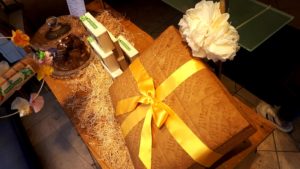
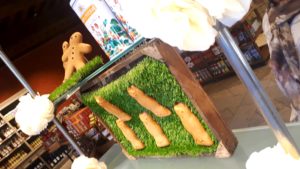

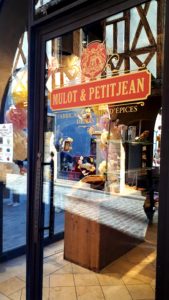
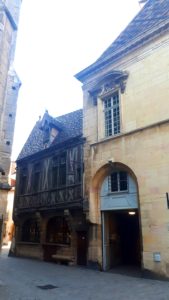
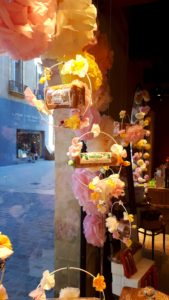 An other specialty of Dijon, the gingerbread (which was called a long time ago, the boichet) has been brought back from Flanders by the Duchess Marguerite of Burgundy.
An other specialty of Dijon, the gingerbread (which was called a long time ago, the boichet) has been brought back from Flanders by the Duchess Marguerite of Burgundy.At the beginning, it was manufactured with wheat flour because the original recipe contained rye, but the region had none culture. Thus, the Mulot & Petitjean manufacture was founded in 1796 and was installed in the center of Dijon, until 1812 when it expatriated in periphery. A multitude of different gingerbreads are proposed in the different stores. Whatsoever the traditional wheat and Anis pains d’épices, there are the nonettes filled by a choice of notable jams. Note also the Musée du Pain d’Épice (Museum of Gingerbread) founded by the company and presenting the evolution of manufacturing techniques since the origins.
One last anecdote, the old wooden Milliere House (in the center picture) was the filming location for the famous 1990 movie, Cyrano de Bergerac, starring Gérard Depardieu!
–
Musée du Pain d’Épice, 10 Boulevard de l’Ouest, 21000 Dijon. Open from Tuesday to Saturday, from 10h to 12h30 and from 14h to 18h30, last visit at 17:30 / T. 00 33 (0)3 80 66 30 80.


